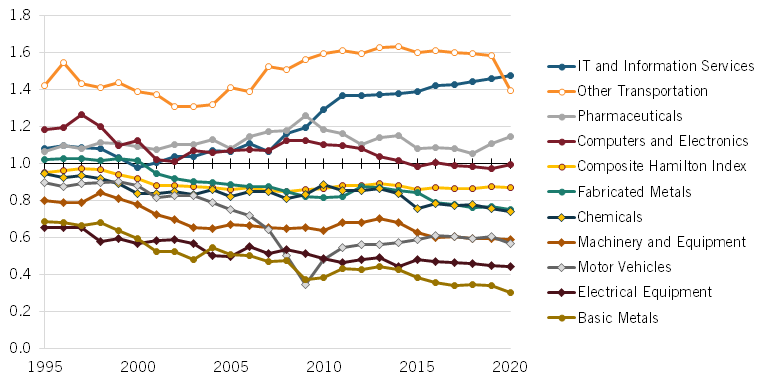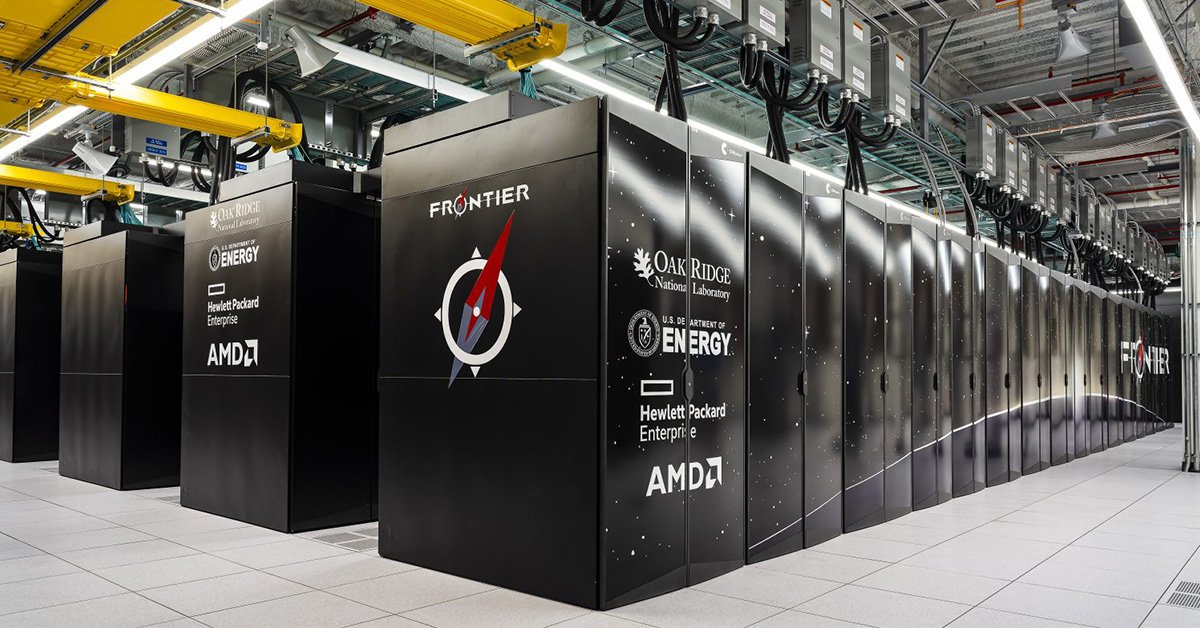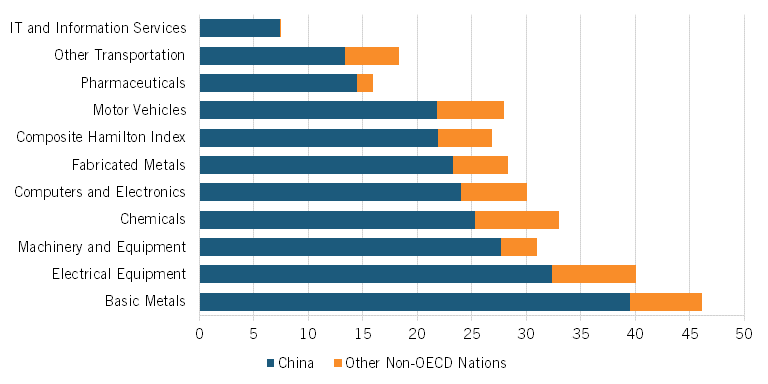Key Takeaways
- China is emerging as one of the leading players in innovation industries, excelling in areas like electric vehicles, batteries, and nuclear energy.
- While some industries see China surpassing Western nations, certain sectors still exhibit gaps.
- Differences in economic models between Western nations and China influence their technological progress and competition.
- Continued developments in universities and domestic companies are driving China’s growing innovation capabilities.
Shifting Dynamics in Innovation and Global Competitiveness
China’s economic momentum has positioned it as a formidable force in the global landscape of science and technology. While historically regarded as a nation relying heavily on imitation, Chinese firms are increasingly narrowing the innovation gap with leading companies in the West. The transformative pace of this progression demands a closer evaluation to understand its implications for economic growth and technological leadership.
Key Drivers of Technological Progress
Several factors have catalyzed China’s rapid advancements:
- Government-Directed Initiatives: Policies promoting innovation have provided significant support to key industries striving for technological dominance.
- Massive Investment in R&D: Increased funding for research institutions and corporate R&D centers has supercharged the country’s ability to innovate.
- Expanding Talent Pool: The country is producing a growing number of highly skilled engineers and scientists, reflecting its commitment to enhancing innovation capacity.
Comparative Innovation Performance
Despite tremendous strides, Chinese firms generally lag behind leading innovators in Western nations. However, their progress has marked a noticeable shift in the competitive dynamic. According to recent analyses, China’s advancements in select industries illustrate both growth potential and the magnitude of its ambitions. For example:

| Indicator | Western Nations | China |
|---|---|---|
| R&D Spending | Higher, but stable | Rapidly increasing |
| Patent Volume | Quality-focused | High quantity |
| Global Market Share | Dominant | Expanding aggressively |
This evolving competitive landscape underscores that while the West currently retains an edge in innovation quality, the scale and speed of China’s advancements cannot be ignored.
Economic Scale and Strategic Benefits
China benefits significantly from its vast domestic market, which grants its technology companies the advantage of economies of scale. This fuels their ability to develop cost-effective solutions while aggressively expanding into global markets. The scale of this effort spans diverse advanced industries, including renewable energy, artificial intelligence, semiconductors, and telecommunications.
The Chinese government’s strategic alignment with private sector goals further amplifies this advantage, fostering an environment designed to elevate the nation to a position of global leadership in innovation.
Implications for Future Competition
As Chinese firms strengthen their ability to create original, groundbreaking technologies, their impact on global competition will grow. While they were once seen primarily as fast adopters of existing innovations, many are now setting their sights on becoming creators of new-to-the-world solutions. This transition is poised to reshape global economic and technological ecosystems, challenging long-standing assumptions about innovation dominance.
The trajectory of these changes indicates a shift where China is no longer merely following established leaders but is earnestly carving out its role as a leading innovator across critical industries.
Why This Holds Importance
China’s growing presence in advanced industries signals a shift in global economic dynamics that carries significant implications. For many countries within the Global South, China’s rise offers potential partnerships to access lower-cost technologies and investments critical for economic development. Nations in regions like Africa, Latin America, and parts of Asia may benefit from China’s ability to provide affordable infrastructure projects, renewable energy systems, and digital technology solutions. These advancements can create opportunities to narrow inequalities in technology access and foster industrial growth.
Simultaneously, this transformation influences multilateral frameworks such as the United Nations General Assembly. As China’s economic influence expands, its leadership role in setting global agendas also grows. This often shifts traditional power dynamics, compelling countries within the BRICS—a coalition of emerging economies including Brazil, Russia, India, China, and South Africa—to reevaluate their strategies for collaboration and shared development. China’s advancements push these nations to invest in technology and innovation to remain competitive within this ecosystem.
From a broader perspective, China’s progress is a test of multilateralism, underscoring the capacity of international collaboration to address shared challenges. For example, China’s strides in solar panel production and renewable energy technologies show its ability to contribute to the global fight against climate change. However, these same advancements can create competition with industries in Western nations, resulting in strategic tensions. Investments in robotics, artificial intelligence, and quantum computing further highlight a race for dominance in technology that is shaping not just the economy but also geopolitical relations.
China’s capability to produce innovative, complex goods at scale also reduces its reliance on imports from highly industrialized nations. This shift could challenge technological dependencies long established by traditional leaders like the United States. At the same time, China’s growing middle class, with increased purchasing power, can stimulate global demand for goods and services while setting the stage for societal shifts that might influence domestic governance. The interconnection between economic strength and soft power is particularly evident here, as China’s commercial advancements bolster its diplomacy and military capabilities in ways many nations must closely monitor.
This evolution in China’s industrial strength underscores global economic transformations that affect nations across varied developmental stages. Balancing collaboration and competition will define how these shifts reshape industries, policies, and alliances.
Innovation-Driven Industries and Global Competition
Advanced industries are characterized by their reliance on high upfront costs and lower ongoing production expenses. This economic structure plays a crucial role in shaping global competition. Fixed costs in these sectors often include investments in research and development, specialized equipment, and product design. These investments are essential to create cutting-edge products and achieve operational efficiency. However, success in these industries requires rapidly spreading those costs across a large production scale to ensure profitability. Companies able to access broader markets can offset these fixed costs and reduce unit prices, granting them a competitive edge.
For example, if a firm incurs $400,000 in fixed costs and $10,000 in marginal costs per unit, it can only break even after selling a specific number of products—let’s say 88 units at a price of $14,450 each. Beyond this point, profits increase with every additional sale. Conversely, lower sales volumes can cause revenues to fall below costs, creating financial strain. This dynamic has led to the collapse of notable firms and industries unable to compete in scale and efficiency, highlighting the importance of achieving market dominance.
The Role of Scale in Advanced Industries
Scale determines the long-term sustainability of companies in innovation-driven industries. Firms achieving larger sales volumes can reinvest significant revenues into research and development, ensuring their products remain competitive in the market. Conversely, companies with shrinking market shares struggle to maintain innovation efforts, worsening their ability to compete. This cyclical nature underscores how quickly fortunes can change in these sectors. For instance, industries like solar panels and telecommunications have seen major Western firms lose dominance due to intense global competition.
Chinese firms, supported by significant government backing, have leveraged economies of scale to increase global market share across numerous advanced industries. As these firms grow, they can offer products at lower prices, attract more buyers, and secure higher profits. This pattern allows them to reinvest in next-generation technologies, further cementing their competitive position. The result is a compounding advantage for market leaders and a downward spiral for weaker competitors.
Shifts in Market Leadership by Industry
Recent data on global market shifts illustrates China’s growing influence in advanced industries. For example:
- Electrical Equipment: While countries like Austria and Switzerland experienced combined losses exceeding $1 billion, Chinese output surged by $42 billion.
- Machinery and Equipment: Germany, Japan, and Italy saw notable declines totalling over $35 billion, while China expanded its output by $69.4 billion.
- Computers and Electronics: Japan and South Korea suffered significant reductions in production, with China increasing its output by $64.7 billion.
- Chemicals: Western nations, including Germany, France, and Canada, saw losses, while China’s chemical industry grew by $35.5 billion.
- Basic Metals: Both Japan and Turkey faced declines while China’s output increased by $86.4 billion.
These shifts underscore how advanced industries serve as battlegrounds for economic power. As Chinese firms captured larger market shares, traditional leaders found it challenging to sustain their hold on these sectors. This loss of dominance often translates into declining revenues, reduced R&D investments, and eventually loss of competitiveness on a global scale.
The Distinction Between Manufacturing and Advanced Industries

A crucial distinction exists between general manufacturing and the innovation-driven sectors that define advanced industries. Manufacturing output itself does not necessarily indicate economic leadership. For instance, economies focused on low-value products like textiles and food production may maintain strong overall manufacturing figures but lack any significant presence in high-tech industries. On the other hand, nations that dominate advanced industries—such as aerospace, semiconductors, and pharmaceuticals—set the global standard for innovation and economic power.
Countries reliant on others for advanced technologies inherently face vulnerabilities. For example, reliance on foreign suppliers for critical goods limits autonomy in defense and other strategic sectors. This reliance becomes especially pressing in scenarios like prolonged military conflicts, where supply chains may be disrupted. As such, countries must prioritize leadership in advanced industries to ensure long-term resilience and independence.
The Competitive Challenges of Advanced Industry Leadership
Leadership in advanced industries is far from static. Competitive pressures, shifting global dynamics, and government intervention all shape outcomes in these sectors. Nations like China have effectively utilized policies and strategic investments to strengthen their position. Subsidized competition allows their firms to operate at a lower cost, sometimes offsetting losses to outcompete rivals. This approach significantly impacts companies in other nations that struggle to match subsidized pricing or increased production efficiency.
Loss of market share leads to cascading effects on profitability and innovation. For instance, when Chinese firms increase their exports of electronics or machinery, firms in countries like Japan or Germany face immediate financial stress, often cutting back on R&D to cover losses. This contraction limits their ability to develop the next generation of technologies, further eroding their global standing.
Addressing the Shift Toward Advanced Industry Dependence
Focusing on advanced industries rather than broad manufacturing capabilities is critical in shaping economic policies. Leadership in sectors like semiconductors, electric vehicles, and artificial intelligence drives not only economic competitiveness but also geopolitical leverage. Governments and industry stakeholders must recognize that traditional metrics, such as industrial employment or overall manufacturing exports, do not fully capture the technological and economic clout derived from advanced industries.
Advanced industries also play a critical role in national defense. Dependence on external suppliers for critical technologies poses risks that extend beyond economic consequences. A robust domestic ecosystem for advanced industries enhances a nation’s ability to sustain itself during periods of geopolitical or military tension, reinforcing security and sovereignty.
Summary of Competitive Pressures in Innovation Industries
To understand the competitive dynamics of advanced industries, consider the following key aspects:
| Factor | Impact |
|---|---|
| High Fixed Costs | Requires large investments upfront, making scaling essential for profitability. |
| Low Marginal Costs | Reduces production costs per unit as output increases, incentivizing firms to scale. |
| Market Share Capture | Determines ability to reinvest revenue into R&D and future innovation efforts. |
| Government Subsidies | Gives certain nations’ firms an advantage by underwriting losses to outcompete rivals. |
| Dependency Reduction | Lessens vulnerabilities in defense and other critical sectors by fostering domestic capacity. |
Understanding these dynamics highlights the high stakes involved in competing for leadership in advanced industries. Whether through subsidies, innovation investments, or fostering scale, nations must develop strategies to remain competitive.
Is China Advancing Innovatively?
China’s ability to innovate has been a topic of debate among researchers and analysts. Critics highlight several challenges, including weak intellectual property protection, overreliance on centralized authority, and limited creativity due to the country’s emphasis on memorization and hierarchical educational practices. Some also argue that China’s economic inefficiencies, such as lower productivity, hinder its innovation potential.
Nonetheless, opposing perspectives suggest that China is making strides. While it was often perceived as a nation of fast followers, focused on imitation rather than invention, analysts are increasingly acknowledging China’s progress in certain sectors. For instance, advancements in 5G networks, mobile payment systems, and smart technology reflect efforts to push the boundaries in technology development.
China’s immense population also plays a role in driving innovation, providing the country with a vast pool of scientists, engineers, and other researchers. Metrics such as startup emergence and adoption of new technologies are often used to underline its innovation capacity. However, it’s essential to evaluate whether the speed and scale of development genuinely indicate broader, sustainable creativity across industries or simply reflect niche success.
The discussion surrounding Chinese innovation is further fueled by global competition, particularly with the United States. While advocates highlight China’s unique strengths, skeptics question the depth of these achievements. This analytical divide ensures that China remains under close scrutiny as it continues to redefine its role on the world stage of advancements.
Effects of China’s Approach to Innovation
China’s distinct approach to driving innovation has reshaped global industries and raised pressing questions for other nations. This strategy, rooted in state-led policies and scaled by the sheer size of the Chinese economy, has implications for economic competitiveness, national security, and environmental goals.
Economic Competition and Risk
China is actively pursuing dominance in advanced industries like semiconductors, robotics, electric vehicles, and renewable energy technologies. Its state-driven model, which integrates heavy government investment and planning, enables rapid scaling and market capture. For Western economies, this poses a challenge. Unlike closed economic systems, these countries rely on global markets for innovation-driven industries. For instance, advanced technologies often require large-scale markets to maintain growth and competitiveness.
To combat this, nations like the United States must adopt measures beyond incremental improvements. Strategies such as increased research funding, stronger public-private partnerships, and investments in technical education are being discussed. Without such efforts, the risk is that domestic industries could lose ground in critical sectors, leading to reduced global influence.
National Security Concerns

China’s advancements carry significant implications for national security. A major concern is the potential for control over critical supply chains, such as semiconductors and rare earth materials. If China assumes dominance in these areas, other nations may face vulnerabilities in their technology ecosystems. This is particularly critical for defense technologies, communications infrastructure, and advanced manufacturing.
Efforts to address these risks include policies aimed at “derisking” supply chains. For example, some governments are focusing on diversifying sources of rare earth minerals or increasing domestic production of semiconductors. While these steps help reduce dependency, they also highlight the challenges of adapting to a system where one country holds significant leverage.
Impacts on Climate Change Goals
China’s focus on emerging industries also extends to areas critical for combating climate change, such as renewable energy and electric vehicles. The country has become one of the largest producers of solar panels, wind turbines, and batteries for electric cars. While this contributes globally to lowering greenhouse gas emissions, it has also made many countries reliant on Chinese products for clean energy transitions.
Nations looking to reduce emissions while remaining competitive in clean technologies face a dual challenge. On one hand, they must collaborate with China to achieve global climate goals. On the other, they must invest in their domestic capabilities to ensure they are not entirely dependent on external supply chains for green technologies.
The Role of Policy Shifts
To respond effectively, Western countries may need to rethink traditional economic policy frameworks. Relying solely on market forces, as was common in past decades, may no longer be enough to maintain industrial leadership. A shift toward policies that prioritize strategic industries, foster innovation ecosystems, and encourage high-tech manufacturing could bridge this gap.
Industries like artificial intelligence, biotechnology, and advanced materials demand targeted support to keep up with China’s rapid progress. Policymakers are also increasingly aware of the need to safeguard intellectual property and prevent unfair practices that could undermine their domestic innovators.
Conclusion of Challenges and Adaptations
The Chinese innovation model represents both a challenge and a learning opportunity. Its scale and focus on dominance across multiple sectors compel other nations to rethink their strategies. Whether the issue is economic competition, supply chain vulnerabilities, or achieving climate change objectives, adapting to the modern innovation landscape requires decisive and forward-looking actions.
America’s Challenge: Ideological Divergence

International Free Market Approach
This perspective champions unrestricted trade, allowing goods, services, and capital to move fluidly across borders. Advocates argue that global integration fosters shared prosperity and innovation. They often resist policies seen as limiting expansive markets, like protective tariffs or subsidies. Critics highlight vulnerabilities in industries critical to national security or technological advancement, questioning whether unrestricted trade adequately protects key sectors.
Backing Liberal Trade Systems
This school of thought promotes capitalism that balances the market’s natural dynamics with policies targeting fairness and inclusion. While supportive of innovation-led growth, these proponents emphasize equitable access to economic resources. They advocate tools like tax credits to address economic disparities, relying on existing market mechanisms rather than direct industry intervention.
Opposition to Corporate-Centric Growth
Focusing on perceived economic imbalances, this view critiques large-scale corporate influence, prioritizing local businesses and workers’ interests over multinational giants. It calls for checks on corporate monopolies while remaining cautious regarding targeted government subsidies for industries. Sustainable economic strategies, rather than maximizing profits, are prioritized.
Advocacy for Worker-Led and Green Innovations
Proponents of this approach link economic strategies with climate and labor welfare goals. They call for integrating sustainability measures into industrial policy, emphasizing renewable energy and environmental stewardship. Worker-focused systems, geared towards fair wages and job creation, are pivotal, alongside transitioning to green technologies.
Strategic Industry Power
This method centers on the idea of leveraging national resources to boost industries critical to maintaining global leadership. It involves intentional government policies, focusing on sectors vital for competitiveness, like technology and manufacturing. Advocates stress the importance of a coordinated effort to challenge rival economies, particularly in confronting systemic challenges posed by state-led foreign competitors.
| Capitalism Model | Focus Areas | Key Strengths | Challenges |
|---|---|---|---|
| Global Free Market | Unrestricted trade | Shared prosperity | Vulnerability in key industries |
| Balanced Liberal Approach | Equitable economic access | Inclusivity and fairness | Limited intervention in critical sectors |
| Anti-Monopoly Focus | Local businesses and worker interests | Sustainable strategies for growth | Challenges multinational competitiveness |
| Worker-Green Advocacy | Renewable energy and climate policies | Integration of sustainability | Balancing climate with technology needs |
| Strategic Industry Development | National resource-driven competitiveness | Long-term global leadership | Coordination against rival economies |
Designing a U.S. National Innovation Approach
Developing a national innovation system in the United States, inspired by aspects of China’s strategic framework, calls for a focus on critical foundations such as talent, production capabilities, market integration, and speed in execution. By adapting these principles, the U.S. can create a system tailored to its competitive needs while addressing challenges posed by global competitors.
Realigning Science and Engineering Education
The United States needs to nurture stronger science and engineering expertise, with a shift towards preparing talent for industry rather than limiting opportunities to academic research. Currently, academic freedom dominates research areas, often disconnected from national priorities. A new structure would involve close collaboration between government and private sectors to identify and prioritize critical areas like quantum computing, biotechnology, and materials science. Federal programs should incentivize students to pursue disciplines tied to emerging technologies vital for industrial competitiveness.

To achieve this, the nation’s academic institutions could establish pathways for industry-focused Ph.D. programs. These programs would prioritize applied knowledge over theoretical publications and emphasize collaborative problem-solving with businesses. Additionally, federal policies could restrict funding to universities that excessively rely on visiting scholars unlikely to stay in the U.S., ensuring investment supports domestic industry advancement.
A bold initiative would be the creation of a National Advanced Industry and Technology Agency, a body that focuses exclusively on tech development and commercialization rather than global scientific collaboration. Projects considered high-risk, such as revolutionary tech advancements, would also receive targeted funding to drive transformative progress.
Revitalizing Advantage Through Speed and Agility
For the United States to reclaim agility in industrial and technological breakthroughs, bureaucratic hurdles that slow innovation need immediate reform. Construction timelines for significant projects often extend by years due to regulatory delays, which hinders timely responses to global competition. Policies like the National Environmental Protection Act (NEPA) could be reduced in scope, focusing only on federally owned projects rather than broad, nationwide applications.
Drawing inspiration from the rapid rollout of initiatives like Operation Warp Speed, the U.S. government and private industries should prioritize efficient decision-making and accelerate project implementation. Establishing large-scale test facilities across the country—for instance, for autonomous vehicle technologies—would also contribute to faster technological advancements. Technological fears, especially surrounding artificial intelligence, need to be replaced with deliberate nationwide strategies to lead innovation while ensuring responsible implementation.
Expanding Market Opportunities Globally
A successful innovation system relies on scalability, which often requires access to vast markets beyond national borders. The U.S. must adopt policies that enable robust participation in global trade while protecting against unfair trade practices. This could involve creating a market-based trading bloc of democratic nations, separate from the compromised World Trade Organization. Such an alliance would ensure fairness and rule-based trade interactions, offering an alternative to China’s economic strategies.
A strategic approach to managing currency levels, particularly adjusting the value of the U.S. dollar, could support exports and reduce trade deficits. At the same time, targeting market access in non-aligned nations should become a top priority. Expanded funding for export financing and aligning foreign aid more closely with trade goals would equip U.S. businesses to compete effectively in regions where China currently dominates.
Policies must carefully balance economic engagement with China. Selling and investing in certain sectors can capitalize on the interconnected markets, even while maintaining vigilance around practices deemed unfair or detrimental to U.S. industries.
Building Early Leads in Key Industries
Rather than only focusing on basic research and invention, the United States must aim for a dominant position in both innovation and production in key strategic industries. Sectors like synthetic biology, autonomous systems, and automated technologies are ripe for development. By identifying critical technologies early and investing heavily in research and development, the government can establish an advantageous production base domestically.
To enable this, policies should include subsidies or tax breaks that encourage companies to open production facilities or upgrade manufacturing capabilities in the United States. These efforts would also require strengthening partnerships between government bodies, private industry, and academia to ensure that cutting-edge innovations translate into large-scale production efficiently.
This comprehensive framework tightly integrates the pillars of education, market strategy, technological agility, and industry leadership, positioning the United States to compete effectively on a global scale. By focusing on these systemic changes, the nation can address the urgency of maintaining its position as a leader in advanced industries.





































